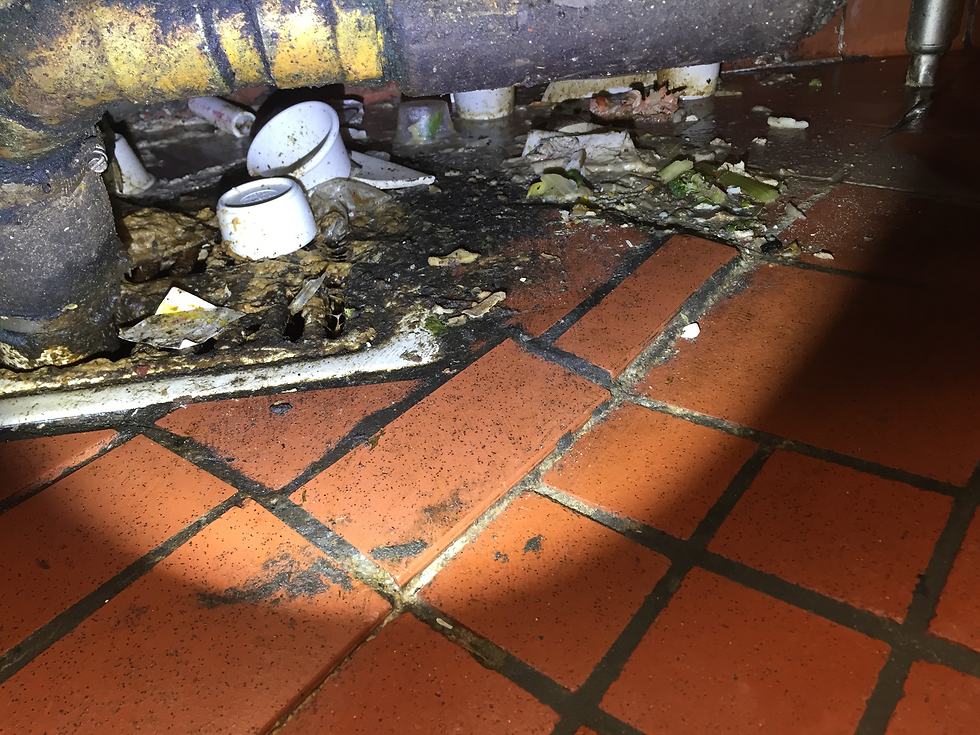A Tail of Two Kitchens (AKA: It may be time to panic)
- Chelle Hartzer

- Sep 19, 2023
- 3 min read

I was at a state conference last week and had lots of fun talking with folks and giving a presentation on ticks. A tick talk!
That led to a conversation I had with someone having issues with one of the commercial kitchens they were servicing. It’s interesting that some restaurants can be almost spotlessly clean and others are…well… not so nice. Let’s delve into that and the problems it can cause.

We all know sanitation is important. It keeps the pest populations stressed out. If you aren’t eating enough, and have to go further and fight others for the meager food that’s out there, you aren’t going to be worried about reproducing. So populations go down due to low reproduction, longer development time, and mortality associated with fewer food resources. A restaurant always has food. It’s impossible to clean up every last little tiny bit of food waste.
So those restaurants who do a great job of cleaning can keep pests to a minimum. Those who don’t have to constantly struggle with ongoing problems. Clean sites will have pests in small areas; those hot-spots tend to be easily noticed and dealt with quickly. Those sites without adequate cleaning procedures will have cockroaches, flies, and more that then spread throughout and that makes them much harder to treat for. They can also spread to other areas like the dining rooms and bars where patrons are. That can lead to social media posts, bad reviews, and the health inspector making an unwelcome visit.

Exclusion is almost as important. If you leave the doors open, the pests can walk right in. When you have a nice neat restaurant, this can happen but the pests won’t find an abundant food source to keep them happy. In an uncleaned site, they can quickly start to reproduce. There have been quite a few instances of rodent sightings in restaurants lately, this is just one of them.
So what if you have one of these not-so-clean sites? Is it hopeless? Should you just walk away or suggest a strategically arranged fire?
It’s not completely hopeless. It will be challenging, take more time, and only keep the population in check, not eliminate it. If you are going to take on one of these accounts, keep that in mind and make sure to communicate to the owners/managers that you won’t fix the problem, just put a band-aid on it until sanitation and structural issues can be fixed.
I get it, I’ve done tough pest control jobs in OLD buildings, in cities where restaurants are open and there are barely any walls, and in sites that are just infested to begin with. Sometimes a band-aid is all you have and it will still stop some of the bleeding. Here are some tips:

You probably know where the worst of the sanitation and exclusion issues are: get as many control devices to those locations as possible. If you know a door stays open all the time and mice get in, put a lot of traps by that door, not just one trap. If you know German cockroaches are especially heavy around a dishwasher, bait it with lots of bait and lots of IGR (always following the label of course. Surround those problem areas with as many traps and treatments as possible.
One of my previous colleagues used to say, “if you can’t clean the mess, make the mess toxic.” All those food sources they can’t (won’t) clean up, treat them. There are a few inside products you can use and while it won’t necessarily get all the way through the buildup of food, it will get the surface and all those insects that are trying to feed on it now get a dose of treatment.
Get creative. Sometimes you can’t rely on the standard protocols, particularly in these solutions. Glue boards are tricky in commercial kitchens because they usually wash down the floors most nights so those boards lose their sticky-ness and don’t catch anything. Place glue boards on walls behind equipment and on the sides of equipment. You want to keep them out of sight so they won’t get moved and they won’t get wet. Think about quick fixes on areas that need to be sealed. We always say don’t use foam to seal. Well, what if you did? If an opening gets chewed through or tunneled into, you know that particular spot is an active pathway while others aren’t an issue just yet.

I’ve got lots more tips and tricks for problem accounts, my clients get all of them to solve problems faster with happier customers. If you think you can’t afford an entomologist and technical expert, there are packages to fit every budget. Try me!
Urban pest consulting








Comments